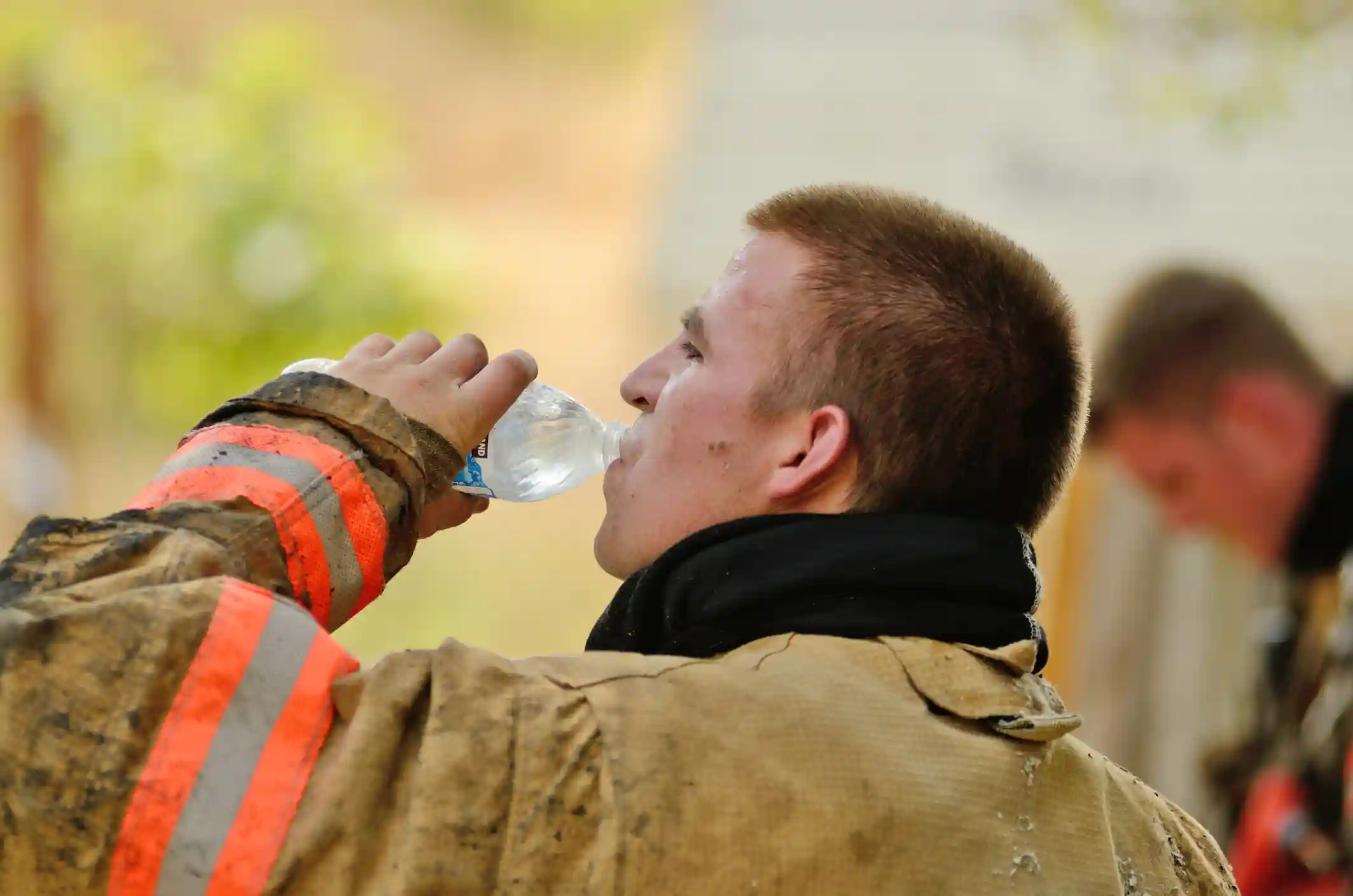Heat Illness Prevention
Explore the pivotal role of Intrinsically Safe Technology in hazardous work environments for enhanced industrial safety. Read our detailed overview.
Heat is the leading cause of death among all weather-related phenomena, and it is becoming more dangerous as 18 of the last 19 years were the hottest on record.
Heat is the leading cause of death among all weather-related phenomena, and it is becoming more dangerous as 18 of the 19 years were the hottest on record.
Heat is the leading cause of death among all weather-related phenomena, and it is becoming more dangerous as 18 of the last 19 years were the hottest on record.
- Occupational Safety and Health Administration
What is heat illness?
Heat illness refers to a spectrum of health issues including dehydration, dizziness, and confusion, with severe cases potentially leading to organ failure or death. Consequently, this can be caused by exposure to elevated temperatures during work-related activities. It is often a result of prolonged periods of intense heat or strenuous physical labor in hot environments, which may be indoors or outdoors. These hot environments can be caused by weather or by heat sources such as a blast furnace. Moreover, the use of heavy Personal Protective Equipment (PPE) further exacerbates the risk.

What is heat illness?
Heat illness refers to a spectrum of health issues including dehydration, dizziness, and confusion, with severe cases potentially leading to organ failure or death. Consequently, this can be caused by exposure to elevated temperatures during work-related activities. It is often a result of prolonged periods of intense heat or strenuous physical labor in hot environments, which may be indoors or outdoors. These hot environments can be caused by weather or by heat sources such as a blast furnace. Moreover, the use of heavy Personal Protective Equipment (PPE) further exacerbates the risk.

Heat illness prevention is of paramount importance to safeguard the well-being of workers in environments prone to elevated temperatures. Prolonged exposure to heat can lead to severe health risks, including heat exhaustion and heat stroke. As a result, implementing effective prevention measures ensures the workforce’s safety and contributes to increased productivity and morale. Read more
Hydration Strategies
Consistent and proper hydration for workers through frequent breaks is crucial for heat illness prevention. For instance, this involves providing easy access to clean and cool drinking water throughout the worksite, encouraging regular water breaks, and educating employees on the importance of staying hydrated. Monitoring hydration levels and promoting a culture that values and prioritizes hydration are integral aspects of these strategies. Read MoreWorkplace Education and Training
Comprehensive workplace education and training are common organizational approaches to managing heat stress. Employees are educated to recognize early signs of heat-related illnesses, enabling prompt identification of symptoms. Emergency response procedure training ensures a swift and effective workforce response to heat-related emergencies. The focus extends to fostering a heat-safe work culture, instilling awareness, promoting responsible behavior, and encouraging open communication regarding safety concerns. These generic educational initiatives empower organizations to build a resilient workforce actively contributing to a safer and healthier workplace in the face of heat stress. Read MoreEngineering Controls
Key engineering controls are integral to various organizations’ strategies for addressing heat stress. For example, some engineering controls are creating shaded areas and installing ventilation solutions to minimize sun exposure and enhance airflow, utilizing cooling fans and equipment for heat dissipation and designing workspaces with materials to promote efficient air circulation. These interventions collectively aim to create work environments that prioritize employee well-being by mitigating the impact of elevated temperatures. Read MoreWet Bulb Globe Temperature (WBGT) Thermometer
Many organizations use a WBGT thermometer, a tried and true method for getting a holistic assessment of environmental conditions, considering multiple factors that contribute to heat stress. WBGTs are often expensive and can be somewhat unreliable as they don’t account for factors such as personal protective equipment, acclimatization, or variations in physical fitness. Therefore, individuals may experience different levels of heat stress even in environments with similar WBGT values. Overall, WBGTs are a one-size-fits-all approach to managing heat stress. Read MoreOur product has been integrated seamlessly into an array of organizations across multiple industries. Our solution could be a good fit for any of the following industries: manufacturing, alternative energy, environmental remediation, military training, first responders, healthcare, construction and more. Overall, our solution is especially useful when used in industries where heavy PPE is used to create an individualized microclimate or where there is high ambient temperature from a blast furnace, industrial dryer, or oven or from the weather itself.
Read about how our product improved heat illness and safety in our case study with UCOR. Read More
How our solution helps
Going beyond traditional methods of ensuring safety when it comes to heat illness, SlateSafety’s solution offers an array of features and benefits to make your safety program easy and efficient while also helping to prevent heat stress incidents before they happen.
Real-Time Physiological Monitoring and Alerts

Easy-to-Use Software and Mobile App
Automated Work/Rest Cycles

Configurable Threshold Limits

Real-Time Physiological Monitoring and Alerts

Configurable Threshold Analytics

Easy-to-Use Software and Mobile App

Automated Work/Rest Cycles

Real-Time Physiological Monitoring and Alerts

Easy-to-Use Software and Mobile App
Automated Work/Rest Cycles

Configurable Threshold Limits

Privacy and Security
Your privacy and security are paramount to SlateSafety. We’ve implemented rigorous measures to safeguard organizations and individuals, ensuring that their sensitive information is protected from unauthorized access. Our commitment to prioritizing security underscores our dedication to providing a safe and trusted platform for all users.
Read up on some of our case studies
Privacy and Security
Your privacy and security are paramount to SlateSafety. We’ve implemented rigorous measures to safeguard organizations and individuals, ensuring that their sensitive information is protected from unauthorized access. Our commitment to prioritizing security underscores our dedication to providing a safe and trusted platform for all users.
